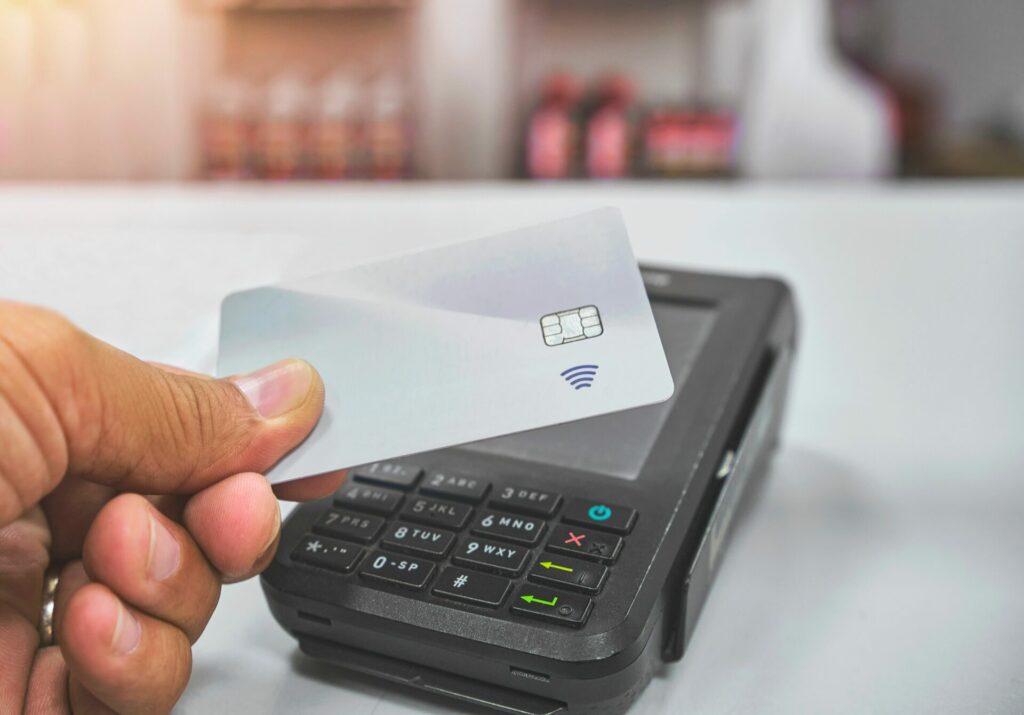
Bright and aggressive
Push marketing, also often called direct or outbound marketing, is more sales-oriented. You tell people exactly what to buy and where to buy it by providing information about products, services, and your pharmacy. In other words, you “push” your message to your audience.
With push marketing, you tell the customer what you offer and what they should ask for. This approach targets both existing and new customers, as it also reaches a part of the audience that has not yet heard of your pharmacy. You should use it when promoting something new (whether it is the pharmacy itself, a service or a product) to consumers who are not yet aware of it.
A “push” strategy can include almost all the tools of traditional advertising:
- Advertising in local media: newspapers, magazines, radio and TV programs.
- Billboards placed directly outside the pharmacy or in strategic, high-traffic locations.
- Mailings to regular customers to inform them about new products or to people living nearby.
- Leaflets and brochures that customers can pick up at the pharmacy.
- Point-of-sale advertising: dispensers, wobblers, racks, displays, posters, etc.
- Promotions, discounts, distribution of free product samples.
Push-marketing can also be implemented on the Internet, using traditional banner advertising, e-mail newsletters, paid displays in social networks or search engines. However, here you need to be prepared for costs.
Conducting an aggressive and colorful advertising campaign requires considerable investment. To make them pay off, you need to understand what goals you are trying to achieve with the help of polush-marketing. It’s best suited for:
- promoting pharmacies that have just opened;
- competing with stronger, more established, dominant rivals;
- temporary sales and promotional campaigns for seasonal goods;
- getting rid of inventory;
- generating cash flow and sales quickly;
- familiarizing customers with new products and services available in your pharmacy.
Push marketing is as loud as a cannon shot and intrusive. Most clients don’t like it, but it works nonetheless. According to analytics firm Wolfgang Digital, even on the Internet, where push and pull strategies are particularly competitive, Pusch marketing still generates up to 46% of revenue for companies.
Pusch marketing will be the best solution for short-term goals, but it won’t solve global problems: it won’t strengthen your brand, it won’t create a core audience, it won’t increase customer loyalty.
Secrets of attraction
Pull marketing uses the opposite strategy. Its goal is to make customers recognize and love your brand, to make them come to your pharmacy to solve any specialty problems. Hence the term “pull”, i.e. attract customers. This approach is primarily focused on the pharmacy’s target audience, and to use it, you must have a good understanding of their needs and be able to meet them.
Unlike push marketing, pull marketing is mainly centered on the Internet. It involves naturally increasing the number of customers through content that is valuable to your target audience. There are people who are actively searching for the products or services you offer right now, and your job is to facilitate their search and slowly lead them to the end goal – the counter of your pharmacy. Pull marketing also increases sales and revenue, and without large investments in advertising, but it does not do it as quickly and dramatically as push marketing.
The most well-known forms of pull marketing include search engine optimization (SEO), blogging, social media content creation such as posting articles, posts, videos, etc., and using customer reviews and testimonials.
Attraction marketing is often a core business strategy for companies seeking to:
- Ensure long-term business growth;
- maintain a dominant position in a particular niche;
- build a base of loyal customers or increase their loyalty;
- increase brand awareness;
- increase traffic to your website or social media traffic.
According to surveys, more than 70% of consumers prefer attraction marketing techniques. They find it less intrusive, non-intrusive, more informative and ultimately see it as a positive and enjoyable path to purchase.
Two categories
– push marketing, which is aimed at pushing the pharmacy or its products to consumers;
– pull marketing, which is aimed at attracting or “pulling” consumers to your brand, products and services and then offering them what they need. You can choose one of these strategies, use them interchangeably or in tandem. The key is to know when each is particularly relevant. To figure this out, you first need to understand the difference between push and pull marketing.
Integrated approach
The choice between push and pull marketing strategies depends on exactly how you want to approach consumers. However, you don’t always have to choose. The greatest success is achieved by companies that focus on an integrated approach. Push and pull marketing strategies can work well together. Consumers need a push to create demand and a pull to satisfy it, so you can combine the two.
As an example of how to use both strategies, consider the Mother and Child pharmacy, which has launched a new service – assistance from a pharmacist in calculating the dosage of medicines for children depending on their age and weight (it is not easy for parents to understand the instructions that contain this information). To tell potential clients about the new service, you can, for example, install a billboard in the nearest public garden where parents with children walk. This will require costs, but will allow you to get your message to the target audience. However, the “buckshot” of such advertising will also catch those for whom it was not intended at all, for example, pensioners who are relaxing in the park on the benches, or athletes who come here for a jog. This is an example of push marketing.
At the same time, the pharmacy can prepare an article with useful tips on how to give medicines to the child without making dosage mistakes, adding at the end that its pharmacists can answer any questions parents may have. Such an article can be placed on the website of the pharmacy, as well as in thematic magazines and blogs for young moms. You can also ask satisfied customers to write a review of the new service and post it in local parent groups on social networks or in search engines.
By putting this kind of material online as bait, the only thing left to do is to wait until parents who have had difficulty calculating the dosage of their medication start looking for a solution to their problem on the Internet, come across information about a pharmacy that provides the service they need, and visit it to consult and make a purchase



